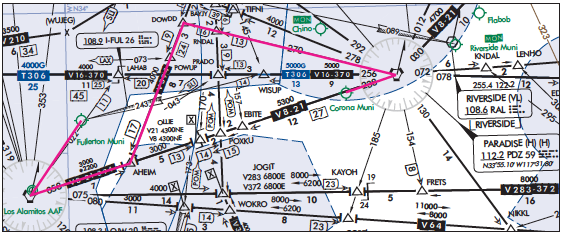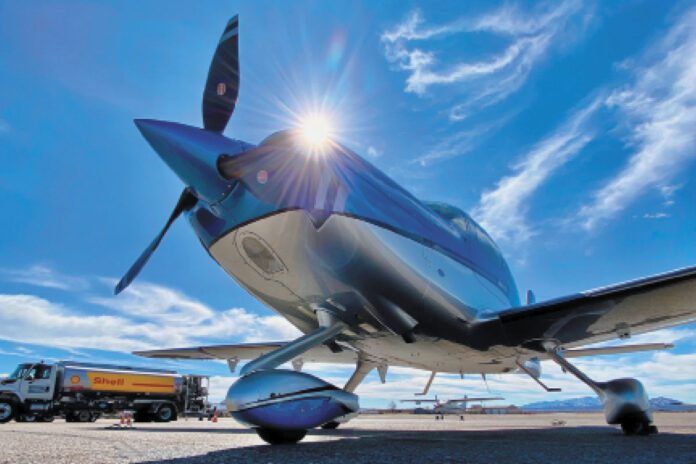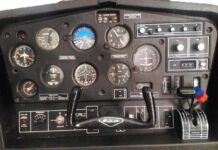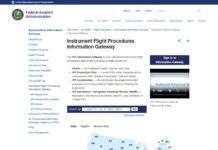Got Fuel?
I was recently reviewing the fuel requirements for IFR flight, and I realized that they were not what I was thinking. I thought that §91.167 said we couldn’t begin a flight under an IFR flight plan without enough fuel to reach our filed destination, etc. Instead, it says we can’t operate a flight in IFR conditions without enough fuel to reach the first airport of intended landing, etc.
The difference between the two is significant. First of all, what are IFR conditions? I believe the definition of IFR conditions is IMC, so if you are not in IMC then you revert to the VFR fuel requirements?
Next, what is an airport of intended landing? Often we file to destinations with the intention to land at a different airport.
Suppose I am in VFR conditions under an IFR clearance, but with insufficient fuel to reach my filed destination and alternate. The IFR rules don’t apply, so I am okay as long as I met the IFR fuel requirements in my filed flight plan.
Now suppose I enter IMC along my route of flight still on the IFR clearance. I write down on my knee board, that if in IMC, I intend to land at airport KXXX, with VFR weather which is well within my fuel endurance. Is that now my airport of intended landing? Does that negate the requirement to have enough fuel to get to my filed destination and alternate?
As I read through this rule it seems that in many situations, the only binding requirement is that if you are beginning an approach in IMC that you have sufficient fuel to fly the approach and fly to the alternate plus 45 minutes. If you are flying in IMC that is widespread, or over a large body of water or other place where there is no VFR alternative, the IFR fuel requirement would also be binding.
One other thing, the rule does not make it clear what you are supposed to do if at the last minute before you start the approach, ATC gives you a hold that will take you even a minute below the 45 minute reserve requirement. The rule says you can’t operate in IFR conditions. Does that mean you need to declare an emergency immediately?
Andy Davidson
New York, New York
You might want to review “Planning Versus Flying” in the March 2018 issue. While its focus is more on planning and alternates, it does touch on your question.
To specifically answer your questions, yes, “IFR conditions” exist when the weather is less than permitted for VFR flight. See Definitions in §1.1. And we’d say that for most of us “destination” and “first airport of intended landing” are the same. But, if you file to one airport, expecting to perhaps fly an approach to get into VMC and then scud run to your actual destination, then that second airport is your “first airport of intended landing.”
Your interpretation of §91.167 is correct. During an IFR flight that encounters IMC, if you don’t show the specified fuel remaining, you’re in violation. We’d say that your scenario of merely jotting down a different airport for landing if you encounter IMC strikes us as gamesmanship unless that’s your real intent for safety.
But, let’s look at the practicalities. If you honestly and conservatively planned a flight using the latest weather forecasts and other available information, and your plan showed at least 45 minutes of fuel at the destination, you’re good to go. Then, once in flight, that forecast six-knot headwind became 26 knots and your in-flight fuel calculations, combined with all the technology available to you to assist predicting fuel at landing, showed that you’d land with 40 minutes of fuel and you continued to your destination. No fed is going to meet your flight and ask you to drain the tanks to do a fuel calculation. So, the practical reality is that if you continuously monitor your expected fuel remaining at landing and you continue to that landing and do so safely with no drama, it’ll be a non-event and nobody but you will know.

But, instead, let’s imagine that same situation but you decide to declare either “minimum fuel” or a fuel emergency, don’t be surprised if a fed asks you about §91.167, perhaps much later.
Fly-By VOR?
I’m flying Corona to Fullerton, IFR. My cleared route is via the Corona ODP PDZ ONTP9 SLI DIRECT. The ONTP9 is a TEC route that specifies PDZ PDZ270015 DOWDD V394 SLI. I depart Runway 25 at KAJO and start my right turn direct to PDZ. Now the fun part. My next leg is almost 180 turn to intercept the PDZ 270 radial.
Twice I have been told by ATC that I must fly over PDZ before turning to the west on the PDZ R-270. I’ve pointed out that since PDZ is not a flyover waypoint, I can turn prior to PDZ. I called the supervisor, and he said controllers have no way of knowing if the fix is a flyby or a flyover.
Bottom line is that I do believe you can turn before reaching PDZ since it’s not depicted as a flyover waypoint. What say you?
Love your magazine. I refer to it all the time.
Michael Curran
Yorba Linda, California
Regs guru Mark Kolber, TERPSter Lee Smith, and Editor Frank Bowlin discussed this at length and concluded:
The underlying question is if you have to fly over a VOR that’s a significant turning point on an ODP. The answer is yes, you should. First, you’ve been told to. Twice. It’s difficult to defend against violations of explicit instructions.
Now, AIM 5-2-9(a) states “All DPs, either textual or graphic may be designed using either conventional or RNAV criteria. RNAV procedures will have RNAV printed in the title; for example, SHEAD TWO DEPARTURE (RNAV).” RNAV isn’t indicated anywhere on this ODP (or any textual ODP for that matter), so the implication is that it is designed using conventional criteria. Since fly-by and fly-over are terms for RNAV waypoints, they have no relevance to ground-based navaids and conventional procedures such as this.
The historical presumption when changing course at VORs using just VOR receivers (no GPS) is to wait for station passage before changing course. That means flying over it (subject, of course, to things like VOR receiver tolerance, zone of confusion, etc.). One common current example is the approach chart notation about a procedure being NA when arriving from certain directions. No turns are permitted in excess of 90 degrees for RNAV. No turns in excess of 120 degrees are permitted for VOR. The difference is turn anticipation. A fast airplane anticipating a 110 degree turn to an RNAV waypoint can turn so early as to be outside the protected area. The same airplane making the same turn after crossing over a VOR would remain in it. There is actually a larger protected area after the VOR than before it.
Then, the ODP says to “continue climb direct to PDZ VORTAC. Aircraft departing PDZ R-091 CW R-140 and R-231 CW R-280 climb on course.” “Direct to” and “departing” both suggest the need to be at the VOR, thus overflying it. (It’s a shaky argument to say you’re departing PDZ if you remain, say, five miles away.)
Finally, ODPs exist primarily to offer obstacle clearance. If you needn’t fly over PDZ, as noted above, you could well leave obstacle-protected airspace. What if you were doing 249 KIAS with an even higher TAS, and you had a tailwind as you approached PDZ. With turn anticipation, you could easily turn a long distance before the VOR, thus leaving protected airspace and subjecting yourself to potential obstacles. (Probably not the case here, but…) And, if ATC assigns an ODP, they’re doing so for traffic purposes so they know where you’re going to be, especially in the LAX Class B. If some traffic turns way early and some goes over the VOR, it’s difficult to imagine being able to maintain that traffic separation.
Sorry, Michael. Our advice is that next time you put this procedure in your navigator, be sure you set it up to overfly PDZ.





